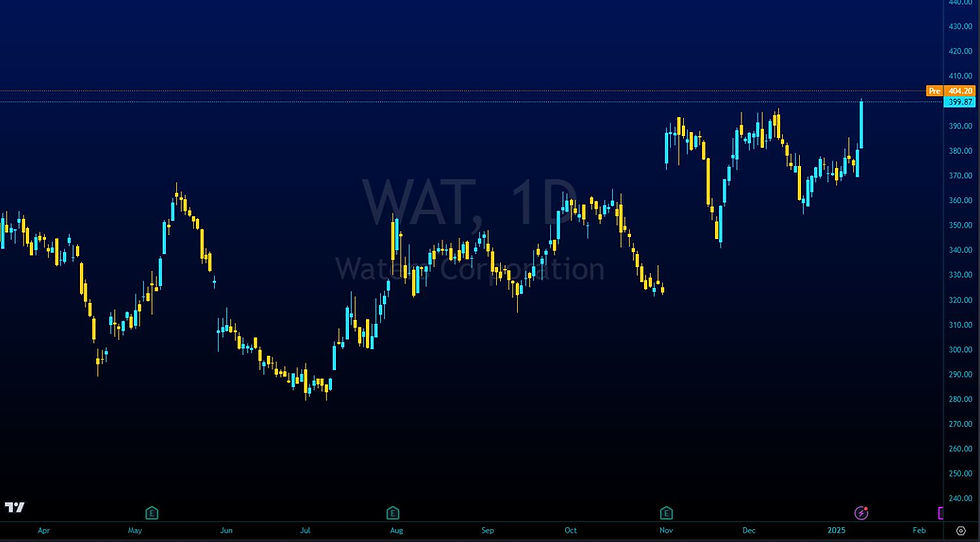Food Security and Sustainable Agriculture: New Paradigms in Commodity Markets
- The Underground Trading Community Team

- Jan 14
- 3 min read
The agricultural commodity markets of 2025 are operating under new paradigms, shaped by the twin imperatives of ensuring global food security and transitioning to more sustainable farming practices. These shifts are fundamentally altering the dynamics of crop production, trade flows, and pricing mechanisms in ways that would have been hard to imagine just a few years ago.

Climate change has emerged as the dominant force influencing agricultural commodity markets. Extreme weather events, changing precipitation patterns, and rising temperatures have increased crop yield volatility, leading to more frequent supply shocks and price spikes. This has put food security at the top of the global agenda, with many countries reassessing their agricultural policies and trade relationships.
In response to these challenges, there has been a surge in investment in climate-resilient agriculture. Drought-resistant crop varieties, developed through both traditional breeding and genetic modification, have gained widespread acceptance. These new crop strains are changing the map of global agriculture, allowing food production in previously marginal areas and altering traditional trade patterns.
Precision agriculture, powered by AI, IoT sensors, and satellite imagery, has become the norm in many parts of the world. This technology-driven approach has led to significant increases in yield and resource efficiency. It has also created new commodity sub-markets, with premiums being paid for crops grown using verifiably sustainable methods.

The concept of regenerative agriculture has moved from the fringes to the mainstream. Farming practices that sequester carbon in the soil are now incentivized through carbon credit schemes, creating a new revenue stream for farmers. This has led to changes in land use patterns and crop choices, with knock-on effects on commodity supply and pricing.
Vertical farming and other forms of urban agriculture have scaled up significantly, particularly for high-value crops like leafy greens and berries. While still a small part of overall agricultural production, these technologies are reshaping supply chains for certain commodities, reducing transportation costs and improving food security in urban areas.
The plant-based protein revolution has continued to gain momentum, impacting traditional livestock and feed grain markets. Crops like peas, lentils, and other legumes have seen dramatic increases in demand. At the same time, lab-grown meat has moved from novelty to mainstream, creating a new category of agricultural inputs and changing the outlook for traditional meat production.

Water has become an increasingly critical and contentious commodity. Water futures markets have expanded, reflecting the growing concerns about water scarcity. Crops that require large amounts of water are facing increased scrutiny, leading to shifts in production patterns and trade flows.
The push for transparency and traceability in food supply chains has led to the widespread adoption of blockchain and other distributed ledger technologies. These systems allow for real-time tracking of commodities from farm to fork, helping to reduce fraud, improve food safety, and provide consumers with detailed information about the origin and production methods of their food.
Geopolitical tensions around food security have intensified. Countries are increasingly viewing food production capacity as a strategic asset, leading to policies aimed at increasing domestic production and reducing import dependence. This has led to changes in global trade patterns and increased volatility in certain commodity markets.
For commodity traders and investors, these changes have created a complex and dynamic environment. Success in agricultural commodity markets now requires a deep understanding of climate science, agricultural technology, and changing consumer preferences. The traditional factors of supply and demand are now overlaid with considerations of sustainability, resilience, and geopolitical strategy.
The financialization of agricultural markets has continued, with new derivative products linked to sustainability metrics and climate risks. These financial instruments are providing both hedging tools for producers and new investment opportunities for market participants.
As we look to the future, it’s clear that the agricultural commodity markets will continue to evolve rapidly. The challenges of feeding a growing global population while adapting to climate change and transitioning to more sustainable practices will drive innovation and create new market opportunities. For those able to navigate this complex landscape, the agricultural commodity markets of 2025 offer the potential for both financial returns and positive impact on global food systems.
